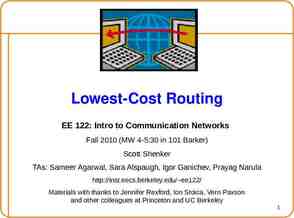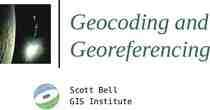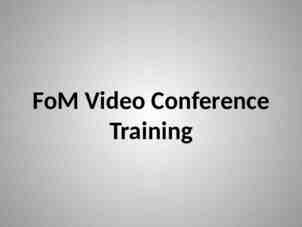Dr Hunter-Gatherer From The Wisdom Water Carrie Bourassa, PhD
21 Slides2.07 MB

Dr Hunter-Gatherer From The Wisdom Water Carrie Bourassa, PhD Chair, Northern & Indigenous Health Scientific Director, Institute of Aboriginal Health, CIHR Oct. 13th, 2017

Presenter Disclosure Slide Carrie Bourassa, PhD Relationships with commercial interests: NONE Potential for conflict(s) of interest: NONE

The Concept of Wisdom Water - I humbly acknowledge the Robinson-Superior Treaty territory and the land on which we gather is the traditional territory of the Anishnaabeg and the Metis. - Today’s research landscape is rapidly changing. “Dialogue must become a central feature of a new relationship between Indigenous Peoples and other traditions of knowledge. The ethical space between cultures offers itself as the theatre for crosscultural dialogue for the objective of ethically engaging different knowledge systems.”1 - Wisdom Water (community knowledge) is at the centre of research and the Hunter-Gatherer has a responsibility to act in an ethical way and undertake research by, with and at the direction of the community.

Research as a Way of Life - . “We had our own teachings, our own education system – teaching children that way of life was taught by grandparents and extended families; they were taught how to view and respect the land and everything in Creation. Through that the young people were taught how to live, what the Creator’s laws were, what were the natural laws, what were these First Nations’ laws the teachings revolved around a way of life that was based on their values” Elder Peter Waskahat, Saskatchewan (Treaty Elders of Saskatchewan, 2000).

The State of Indigenous Peoples’ Health Aboriginal population in Canada is 3.8% (an increase from 3.3% in 2001) Aboriginal population grew by 45% between 1996 and 2006 - almost 6 times faster than the general Canadian population -The Aboriginal population is predominant in Ontario and the Western provinces where 8 in 10 Aboriginal people reside -First Nations people continue to suffer from high rates of chronic and infectious disease and higher mortality and infant mortality rates compared to the general Canadian population -CVD, Diabetes, Obesity, Cancer, Stroke, Suicide, Motor Vehicle Accidents and Homicide are major causes of death among Aboriginal populations -The life expectancy of First Nations peoples was estimated at 68.9 years for males and 76.6 years for females, reflecting differences of 7.4 and 5.2, respectively, from the Canadian population’s life expectancies.

The State of Indigenous Peoples’ Health -Preventable deaths due to circulatory diseases (23% of all deaths) and injury (22% of all deaths) account for a near staggering 50% of all deaths. -For First Nations ages 1 to 44, the most common cause of death was injury and poisoning. The primary cause of death for children less than 10 years was classified as unintentional (accidents). -Suicide rates for Aboriginal youth range from 5-7 times higher than the national average. -The potential years of life lost from injury alone was more than all other causes of death and was almost 3.5 times that of the general Canadian population. (Health Canada, 2008) -The mortality rate due to violence for Aboriginal women is 3X the rate experienced by all other Canadian women. -Aboriginal women with status under the Indian Act & who are between the ages of 25 & 44 are 5X more likely to experience a violent death than other Canadian women in the same age category (Amnesty Int’l, 2004) -Six in 10 (59%) Aboriginal female spousal violence victims reported injury, while about 4 in 10 non-Aboriginal female victims were injured (41%)(StatsCan,

Root Causes of Ill-Health Among Indigenous People -Disparities in health exist on the basis of race in Canada (Lasser et al, 2006). Racism, oppression, historical legacies and government polices continue to perpetuate the ongoing state of Indigenous Peoples‘ health inequities in many Indigenous communities (Virginia Department of Health, 2013). -Indigenous Peoples carry an inordinate burden of health issues and suffer the worst health of any group in Canada. Beyond that, Indigenous people experience the poorest living conditions, inequitable access to education, food, employment and healthcare/health services in a country that reliably ranks in the top ten on the United Nations human development index (Diffey and Lavallee, 2016; Allan & Smylie, 2015; Reading & Wien, 2009)

Root Causes of Ill-Health Among Indigenous People -Inequitable access leads to the worst health outcomes (Aboriginal Health Advisory Committee, 2012; Reading & Wien, 2009), but most importantly racism has been identified as the major factor in creating and reinforcing these disparities (Diffey and Lavallee, 2016; Allan & Smylie, 2015; Hart & Lavallee, 2015; Loppie, Reading, & de Leeuw, 2014). -This racism is rooted in our colonial history and the processes that have – and continue to – disconnect Indigenous communities from their lands, languages, and cultures (Diffey and Lavallee, 2016; King, Smith, & Gracey, 2009; Commission on Social Determinants of Health, 2007). -However, Indigenous people are resilient, we do have greater capacity to undertake research and we have far more community engagement and direction than ever before. -One of the immediate priorities of the institute is to engage Indigenous grassroots communities to ensure the priorities identified truly do reflect community priorities. Communities are also very keen to see strengths and asset based solutions and that included research initiatives.

Ethical Research: Indigenous Principles & Concepts - Concepts of: - Reciprocity - The collective - Building relationships - Giving back - Holism - Responsibility - Respect Processes: - Capacity Building - Community Control - Community Engagement - Collaboration - Cultural Responsiveness

Ethical Research: Indigenous Principles & Concepts - - - - Reciprocal Learning means to make learning a two-way process and ensure that give and take between faculty/Elders/Knowledge Keepers and HQPs/Trainees/Research Assistants/Community Partners opens up new levels of understanding (Kirkness & Barnhardt, 1991). Learning is also holistic, reflexive, interconnected, reflective and relational (Chrona, 2016). OCAP (Ownership-Control–Access-Possession) is often used in Canada as a specific protocol for working with Indigenous communities. It is a political response to colonial approaches to information and is ultimately self-determination applied to research. In practice it implies that ownership of data rests with communities, who retain control and have prescribed protocols for access and possession (Schnarch 2004; NAHO, 2004). Indigenous Research Methodologies (IRM) – emancipatory in nature; employs community-based participatory methods (that are directed by the community/communities); and integrate anti-colonial theory (Kovach, 2009) and is rooted in Indigenous Knowledge.

Current Community-based Research Priorities - - Research priorities are established by the community directly or sometimes through community research advisory boards. Indigenous Community-based Health Research Lab (Morning Star Lodge) – guided by an Elder (http://www.indigenoushealthlab.com/) Canada Foundation for Innovation funded (community lab and student training lab) 11 funded grants – all have Indigenous Community Research Advisory Boards led by Elders Research agreements with all Indigenous partners Full engagement, capacity building, direction from communities Current grants include HIV/AIDS/Sexual and Reproductive Health/ Indigenous Water Co-governance/AgingusingTechnology/Dementia/Cultural Safety Evaluation Training and Research Lab - Nimkii Maskiki Bineshii – Thunderbird Medicine Lodge – partners from across Canada

Current Training/Mentorship Priorities - Mentorship of undergraduate and graduate students is a priority We don’t have a hierarchy in the lab – everyone is a mentor – two-way learning Currently have 6 students in the lab (hiring several more) through funded grants 3 in the community Supervise 3 Graduate students (winding down from 7) Elders and Community partners are central to training and mentorship (academic training is only one aspect of one’s learning) Work with partners such as Indigenous Physicians’ Association of Canada, Royal College of Physicians and Surgeons of Canada, Royal Society of Canada, CAAN, All Nations Hope Network, Canadian HIV Women’s Sexual and Reproductive Health Cohort Study (CHIWOS), UBC, Keepers of the Water, U of T, File Hills Qu’Appelle Tribal Council, Canadian Virtual Hospice, AGE-WELL, Canadian Immunization Research Network , Aboriginal Nurses’ Association of Canada, Canadian Medical Association

Opportunities and Intersections - - Truth and Reconciliation Commission (TRC) - Health related recommendations #18-24. These speak generally about acknowledging that the current state of Indigenous health in Canada is a direct result of previous Canadian government policies, and that recognition and implementation of actions around the distinct needs of Indigenous peoples’ health should take a rights-based approach according to international and constitutional laws as well as the Treaties. - #19 is a clear call for health research – it refers to establishing measurable goals, closing the gaps in health outcomes, monitoring a number of indicators, and communicating results through annual reporting . - #23 concerns increasing the number of Indigenous health professionals who are working in the health professions, which logically includes health research and to provide cultural competency training to all health care professionals. United Nations Declaration on the Rights of Indigenous Peoples UNDRIP - The Declaration was adopted in 2007 by the UN General Assembly (Canada adopted in 2010). The Declaration proclaims an historic body of collective rights and human rights of Indigenous peoples and individuals. - #43 and 44 of the TRC are directed to all levels of government to adopt and implement the UNDRIP as a framework of reconciliation.

What are your priorities? - The new Cultural Safety, Evaluation, Training and Research Lab will be home to a variety of research related to cultural safety and it will be a mentorship training lab however your research priorities will guide the direction of the lab. - The lab will be guided by a Community-based Research Advisory Committee - have a committee in place and expecting to expand it

IAPH Strategic Priorities The IAPH will provide leadership to a national research agenda to create and translate new knowledge to improve the health of Aboriginal, or Indigenous, Peoples (i.e., First Nations, Métis and Inuit). Such an agenda will be aligned with the CIHR Health Research Roadmap II and, in particular, with Research Priority B: Health and Wellness for Aboriginal Peoples. The Institute will focus its strategic agenda and initiatives on three strategic directives. These directives, with related initiatives, are as follows: 1) To propel First Nations, Inuit and Métis Peoples and communities to drive First Nations, Inuit and Métis health research and knowledge translation -Mentor and train the next generation of First Nations, Inuit and Métis researchers. -Incorporate concepts of Indigenous wellness and Ways of Knowing into all CIHR initiatives. -Stimulate and support collaborative networks of researchers, policy makers, service providers and First Nations, Inuit and Métis Peoples and communities to translate knowledge to improve the health of Indigenous populations.

IAPH Strategic Priorities To transform First Nations, Inuit and Métis health using Indigenous Ways of Knowing, and the guiding principle of Reciprocal Learning - Design research funding opportunities that ensure First Nations, Inuit and Métis Peoples are an integral part of the entire research process. - Infuse Indigenous Ways of Knowing and the Two-Eyed Seeing approach into the research process in order to catalyze respect for Indigenous knowledge, values and cultures. - Advocate for the use of Indigenous Ways of Knowing and the Two-Eyed Seeing approach to influence research priorities and to determine interventions useful to First Nations, Inuit and Métis Peoples.

IAPH Strategic Priorities To advance beyond acknowledged notions of health equity and give primacy to wellness, strength and resilience of First Nations, Inuit and Métis Peoples. - Collaborate with First Nations, Inuit and Métis Peoples to convey and advance concepts of wellness as standards for policy and practice to better the health of all Canadians. - Collaborate with international bodies to foster the integration of wellness into Indigenous health research and knowledge translation. - Work with researchers and policy makers to identify indicators to measure and monitor wellness.

IAPH Strategic Priorities To realize these three strategic directives, the IAPH will invest in CIHR initiatives and other activities of potential interest. Examples include the CIHR Roadmap Accelerated Fund (RAF) initiatives (i.e., the Pathways to Health Equity for Aboriginal Peoples that started in 2013-14, the Healthy Life Trajectories Initiative that started in 2015-16, and the Canadian Arm of the Healthy Life Trajectories Initiative, which will begin in 2017-18); the CIHR Indigenous Mentorship Network Program; and the New Iterative Peer-Review Process for Indigenous Health Research Applications. Goals - The goals of the IAPH strategic development activities are three-fold: 1. To support CIHR in increasing its investments in Indigenous health research to a minimum of 4.6% of CIHR’s annual budget; 2. To create new knowledge pertaining to Indigenous health; 3. To translate that knowledge to improve the health of First Nations, Inuit and Métis Peoples.

Megweetch, Thank you, Questions? - Special thanks to my Kookum, Elder Betty McKenna Elder Dot Beaucage Kennedy and Elder Juliette St. Denis, our energetic summer students and all the Advisory Committee Members who give generously of their time and advice to make the new lab a success.

References and Good Reading Bartlett, J., Iwasaki, Y., Gottlieb, B., Hall, D., Mannell, R. (2007) “Framework for Aboriginal-guided decolonizing research involving Métis and First Nations persons with diabetes” in Social Science and Medicine, pg. 1-12. Canadian Institutes of Health Research. (2007) CIHR Guidelines for Health Research Involving Aboriginal People. CIHR: Ottawa. Canadian Institutes of Health Research. (2011) CIHR Guidelines for Health Research Involving Aboriginal People. Downloaded June 24, 2011 at: http://www.cihr-irsc.gc.ca/e/29134.html Cardinal, Harold and Hildebrandt, Walter. (2000) Hildebrandt, Treaty Elders of Saskatchewan . Calgary: University of Calgary Press. Ermine, W., Sinclair, R., and Jeffrey, B. (2004). The Ethics of Research Involving Indigenous Peoples. Saskatoon, Saskatchewan: Indigenous Peoples' Health Research Centre. Retrieved from http://ahrnets.ca/files/2010/05/ethics review iphrc.pdf. Evans, M., Andersen, C., Dietrich, D., Bourrassa, C., Logan, T., Berg, L.D., & Devolder, E. (2012). Funding and Ethics in Métis Community Based Research: The Complications of a Contemporary Context, International Journal of Critical Indigenous Studies, Vol. 5, No. 1, 54-66. NAHO. (2007) OCAP: Ownership, Control, Access, Possession: Sanctioned by the First Nations Governance Committee. Ottawa: NAHO. Retrieved Feb. 16/11 at: http://www.naho.ca/firstnations/english/documents/toolkits/FNC OCAPInfor mationResource.pdf

References and Good Reading NAHO. (2004) Ownership, Control, Access, Possession (OCAP) or SelfDetermination Applied to Research: A Critical Analysis of Contemporary First Nations Research and Some Options for First Nations Communities. Ottawa: NAHO. Royal Commission on Aboriginal Peoples. 1996. On-line version: http://www.aincinac.gc.ca/ch/rcap. Schnarch, B. (2004). Ownership, Control, Access, and Possession (OCAP) or Self-determination Applied to Research. Journal of Aboriginal Health, 1(1), 80-95. Statistics Canada (2008). Aboriginal peoples in Canada in 2006: Inuit, Métis and First Nations. Ottawa: Author. Retrieved from http://www12.statcan.ca/english/census06/analysis/aboriginal/index.cfm. TCPS 2: http://www.ethics.gc.ca/eng/policy-politique /initiatives/tcps2-eptc2/chapter9-chapitre9/ Report of the Indigenous Peoples’ Health Research Centre to the Institute of Aboriginal Peoples’ Health, the Canadian Institutes of Health Research Willie Ermine, M.Ed, Raven Sinclair, PhD Candidate, Madisun Browne, LLB Indigenous Peoples’ Health Research Centre Saskatoon, SK Indigenous Peoples’ Health Research Centre, March 2005 1






